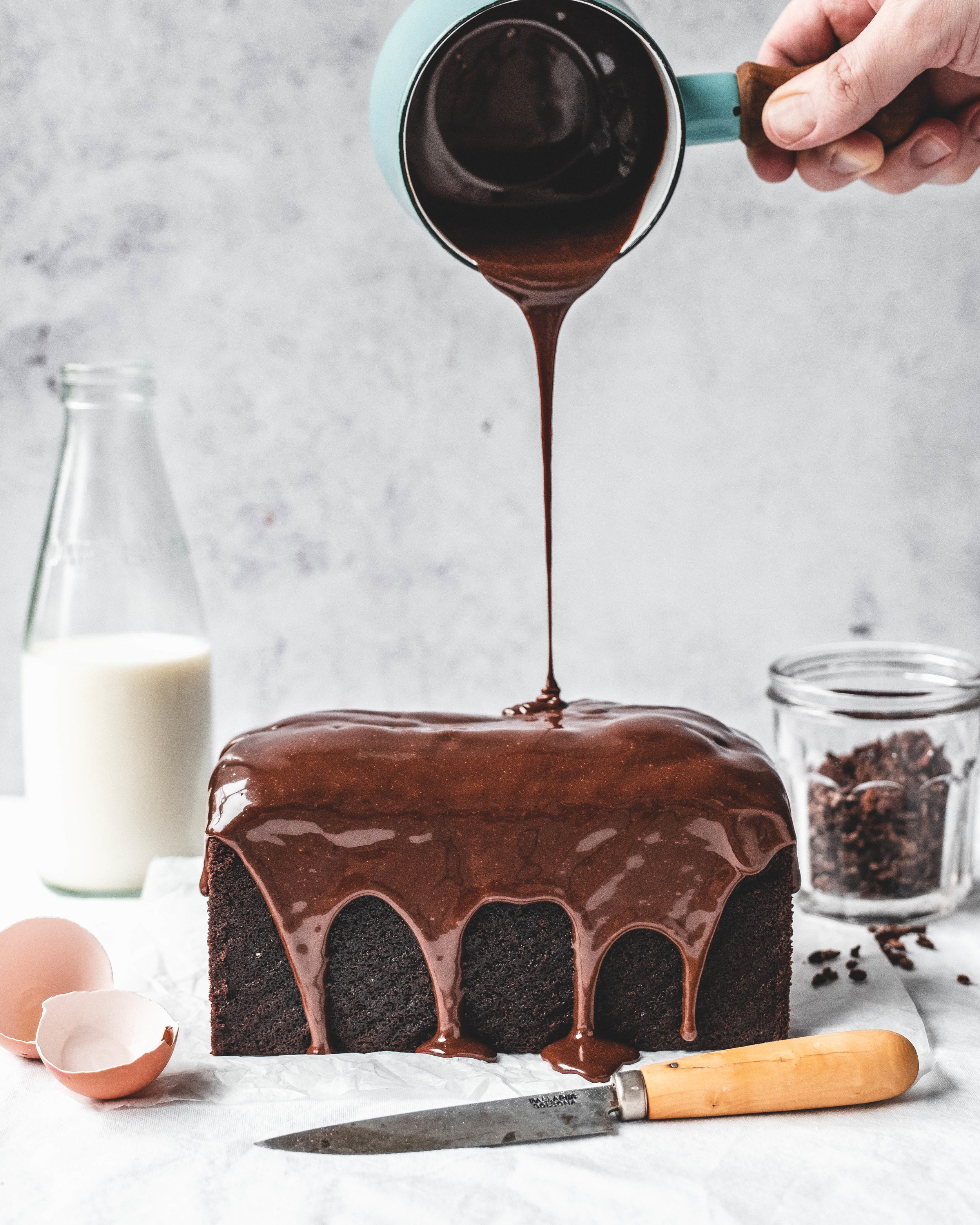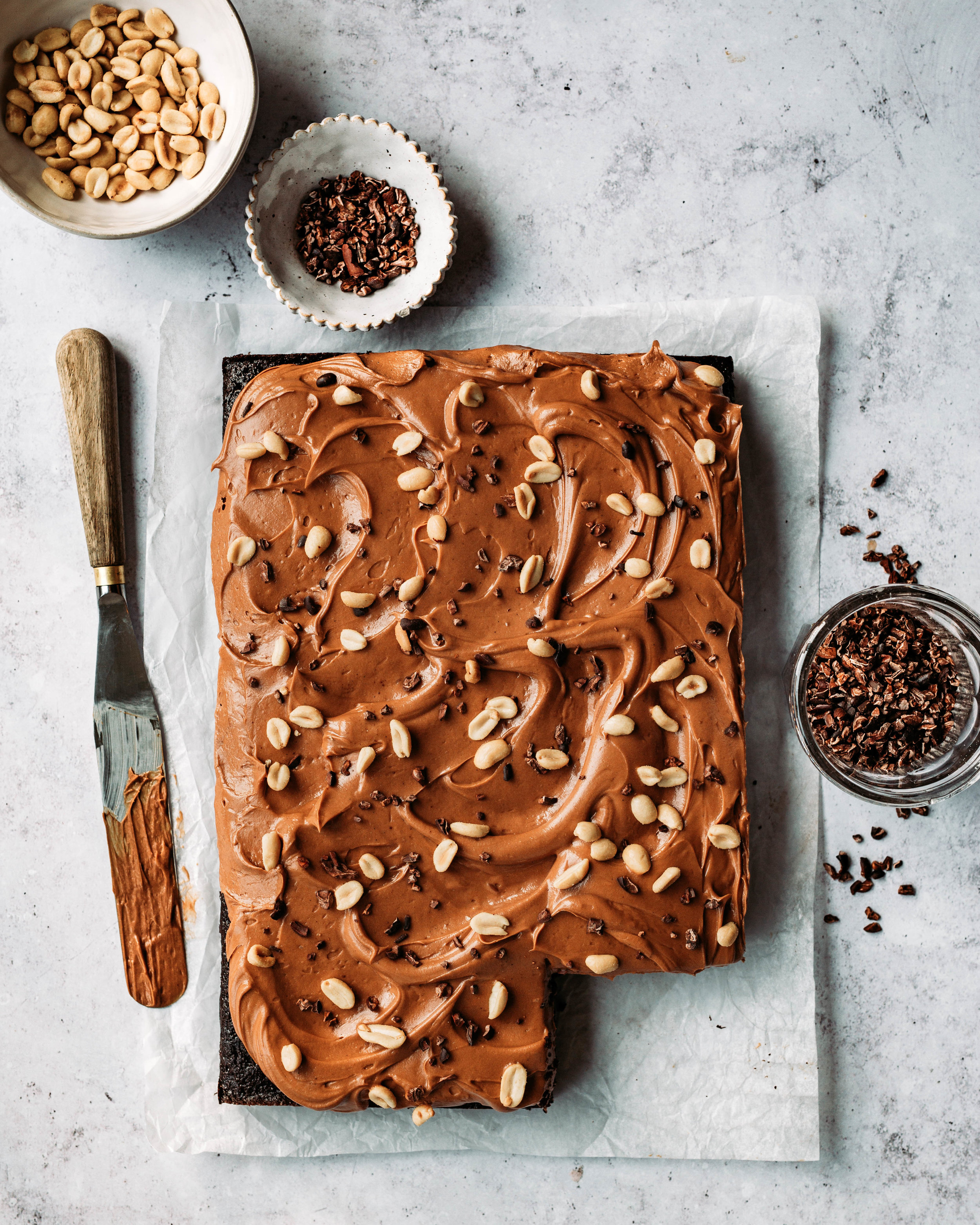This post is sponsored by Doves Farm
Dark Chocolate Espresso Loaf Cake
Serves 10-12
Not every occasion calls for a layer cake, but every occasion definitely calls for cake, and since it’s Easter that cake deserves to be a rich chocolate cake. This cake? Well, this cake is good for any occasion, simple enough for when the family pops by at the weekend and impressive enough it could happily be a birthday cake. Of course the cake tastes amazing; rich and dark, dense and moist like all the best chocolate cakes. It is made with a mixture of Doves Farm Organic Stoneground Wholemeal Spelt Flour and ground almonds, which give the finished cake an enviable texture that keeps incredibly well (4-5 days at least) but also a much deeper flavour than with regular flour. The glaze is the final flourish that makes this cake so special, a milk chocolate glaze infused with espresso and cardamom, a combination that might be a little unexpected but is truly delightful. My friends like to joke that I have an overly enthusiastic love of cardamom, an enthusiasm they say sometimes goes too far…finding a way to sneak it into any recipe I can and to them I say hush now…But if it’s not your thing the cake is just as good without it - a simpler coffee and chocolate cake.
Sour Cream Chocolate Loaf Cake
150g unsalted butter, room temperature
300g light brown sugar
1 tsp vanilla extract
2 large eggs
200g Doves Farm Organic Stoneground Wholemeal Spelt Flour
100g ground almonds
75g cocoa powder
1 1/2 tsp baking soda
1/2 tsp salt
150g sour cream
185ml hot coffee (see note)
Espresso Cardamom Milk Chocolate Glaze
100g milk chocolate, finely chopped
125ml double cream
1/8 tsp ground cardamom
1 tbsp instant espresso powder
Preheat the oven to 180C (160C Fan) and lightly grease a 2 lb loaf pan, lining with parchment paper. This is a large sized loaf pan, if the one you have is smaller (a 1lb / 450g sized pan is very common) you can happily half the recipe, or use the excess batter to make cupcakes.
In a large bowl beat together the butter and sugar, for about 5 minutes or until light and fluffy. Add the vanilla and beat for a few seconds to combine. Add the egg one at a time, making sure you’re beating fully between each addition.
Meanwhile mix together the flour, almonds, cocoa powder, baking soda and salt, then pass it through a fine mesh sieve to remove any lumps of cocoa. Add the dry goods to the butter mixture in three additions, alternating with sour cream. Finish by mixing in the hot coffee, until you have a smooth cake batter. Scrape the finished batter into the prepared loaf pan, gently smoothing out the top. Bake in the preheated oven for about 50 minutes or until a skewer inserted into the middle of the cake comes out clean. Allow the cake to cool in the loaf pan for about 15 minutes before transferring to a wire rack to cool completely.
For the glaze place all of the ingredients into a large bowl and set over a pan of simmering water. Heat, stirring occasionally, until everything has melted and you have a smooth silky ganache. Pour the ganache over the cooled cake, allowing it drip down the sides of the cake. Set aside for about an hour or so until the ganache has a chance to set.
Note: for this cake, unlike other chocolate cakes that use coffee for depth, we want to taste the coffee so feel free to use the strongest coffee you can make








